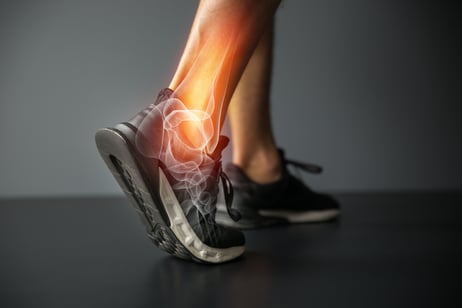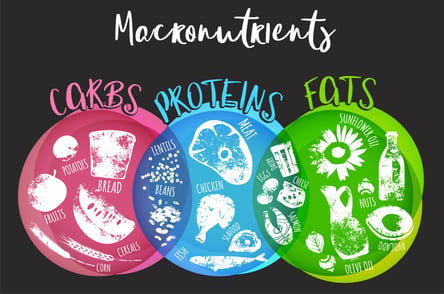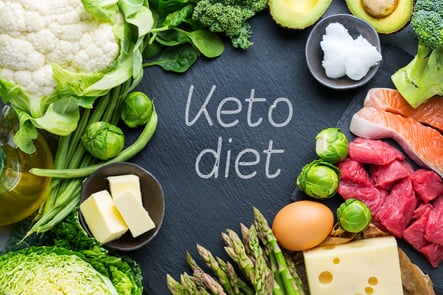 In recent years, carbohydrates have seemingly been blamed for our health problems. Many of us now shun potatoes, rice, and even fruit in fear of the dreaded pounds that could come with eating carbohydrates. While many diets demonize carbohydrates, others preach the benefits of higher-carbohydrate diets. Through all of this confusion, I will try to set the record straight.
In recent years, carbohydrates have seemingly been blamed for our health problems. Many of us now shun potatoes, rice, and even fruit in fear of the dreaded pounds that could come with eating carbohydrates. While many diets demonize carbohydrates, others preach the benefits of higher-carbohydrate diets. Through all of this confusion, I will try to set the record straight.
No single food or food group should be blamed for weight gain or credited with weight loss. Carbohydrates span a broad range of foods, from beans, fruits, and veggies to pizza, pasta, cookies, and French fries. While we hate to oversimplify the equation, weight gain does come down to calories in versus calories out. If we eat too much of anything—even fruits and veggies—we will gain weight. The caveat is that fruits and veggies are nearly impossible to eat too much of because they are rich in fiber and low in calories, while other foods can pack a calorie-dense punch in a very small serving.
How easy is it to eat an entire bag of Chex Mix while you might struggle to eat half a cup of carrots?
Carbohydrates and a Healthy Diet
Carbohydrate-rich foods form the foundation of a healthy diet. The National Academy of Sciences recommends people consume 45–65% of their daily calories from carbohydrates. In a 2,000-calorie diet, this is equivalent to 225–335 grams daily. Carbohydrates are crucial for energy production in the body for working muscles, fuel for proper mental function, supplying vitamins and minerals, as well as providing large amounts of fiber for decreasing risk of chronic disease like heart disease and cancer. Many foods contain carbohydrates: whole grains, fruits, starchy veggies, milk and dairy, pasta, beans, and refined/processed foods.
Should I Avoid Carbohydrates?
In recent years, many have found lower-carbohydrate, higher-protein diets to be beneficial in weight loss. However, the long-term effects of such a diet are not well studied. Many “low-carb” diets can lead to an increase in foods like red meats, processed meats, and saturated fat–containing foods like cheese, butter, and cream. Carbohydrate-rich foods provide numerous health benefits and you should not avoid them. Certain areas of the world called Blue Zones offer an interesting look into the benefits of a higher-carbohydrate diet. They have not only the highest rates of longevity but also very low rates of chronic disease. Blue Zone populations consume 95% of their calories from vegetables, fruits, grains, and legumes and eat meat sparingly.
“Good” Versus “Bad” Carbohydrates
But it is important to think about the types of carbohydrates you are consuming. Unrefined carbohydrates are unprocessed, whole foods that are high in fiber (and many other nutrients) and digest more slowly. Unprocessed, whole-food carbohydrates help you feel fuller and get you through the day feeling less hungry. Processed carbohydrates lack fiber and may have added oils and sugar—they can leave you feeling low on energy as they are quickly digested and burned for fuel. Unprocessed carbs are key to long-term health and can help with weight control. They also guard against type 2 diabetes, cancer, and cardiovascular problems. Try to limit most processed carbohydrates because they are low in nutrients and high in calories.
Unprocessed Carbohydrates
- Oats
- Brown rice
- Fruit
- Beans
- Whole grains
- Vegetables
Processed Carbohydrates
- Soda
- Baked treats
- Packaged sweets/snack foods
- Fruit juice
- Breakfast cereal
Did you now that in 1915 the average American consumed 17.5 pounds of added sugar in a year? As of 2011, the average American consumed over 150 pounds of sugar annually!
In summary, carbohydrates should be welcomed to not only help with weight management but also prevent disease. Make most of your carbohydrates whole, unprocessed foods for a balanced, healthy diet while enjoying the processed/refined carbohydrate foods in moderation. And if you’d like some help with figuring out what to eat, look into Nutrition Coaching at NIFS.
This blog was written by Lindsey Hehman, MA, RD, CD. To learn more about the NIFS bloggers, click here.


 Whether you are a seasoned workout veteran or the new face in the gym, there’s no denying that lower-leg pain can be a huge deterrent for exercise (and day-to-day life, for that matter). Some pains are dictated by the range of motion in the ankle. Due to several factors including previous injuries and wear and tear, physiological problems from the various shoes people wear, and the types of exercises people punish their bodies with, we see individuals every day who have a hard time performing some of the more basic exercises such as squats and deadlifting.
Whether you are a seasoned workout veteran or the new face in the gym, there’s no denying that lower-leg pain can be a huge deterrent for exercise (and day-to-day life, for that matter). Some pains are dictated by the range of motion in the ankle. Due to several factors including previous injuries and wear and tear, physiological problems from the various shoes people wear, and the types of exercises people punish their bodies with, we see individuals every day who have a hard time performing some of the more basic exercises such as squats and deadlifting. A diet that is balanced in its macronutrient distribution can help reduce the risk of disease and help with lasting weight loss. You might have heard of others tracking their “macros” and wondered if this is something that you need to do. So, why and how do you do this tracking?
A diet that is balanced in its macronutrient distribution can help reduce the risk of disease and help with lasting weight loss. You might have heard of others tracking their “macros” and wondered if this is something that you need to do. So, why and how do you do this tracking? We’ve all been there, right? You’ve chosen a new habit that you want to form: go to the gym four times a week, choose one day a week to grocery shop and meal prep, maybe start work on that side hustle you’ve been meaning to do for years. You’re all in, gung-ho for about five days, and before you know it, you’ve fallen back into the same routine as before. That bright flame that once was your motivation has faded into the background. Now what?
We’ve all been there, right? You’ve chosen a new habit that you want to form: go to the gym four times a week, choose one day a week to grocery shop and meal prep, maybe start work on that side hustle you’ve been meaning to do for years. You’re all in, gung-ho for about five days, and before you know it, you’ve fallen back into the same routine as before. That bright flame that once was your motivation has faded into the background. Now what? The “keto diet,” which is short for ketogenic diet, is a low-carbohydrate, high-fat diet that is similar to the
The “keto diet,” which is short for ketogenic diet, is a low-carbohydrate, high-fat diet that is similar to the  Unless you have been on Mars for the last four or five decades, you have heard, read, and seen the benefits of walking for health and fitness. There is no new hot take on walking; it’s always been a fantastic way to stay healthy and enjoy exercise.
Unless you have been on Mars for the last four or five decades, you have heard, read, and seen the benefits of walking for health and fitness. There is no new hot take on walking; it’s always been a fantastic way to stay healthy and enjoy exercise.